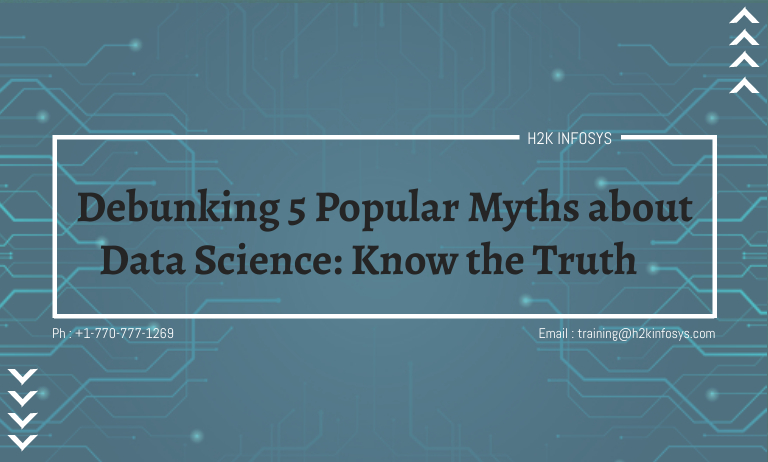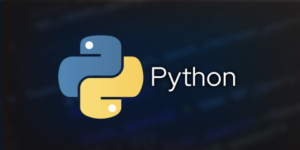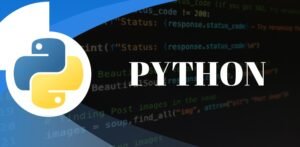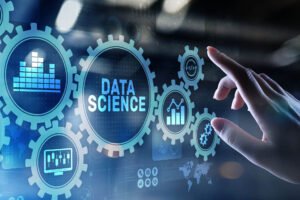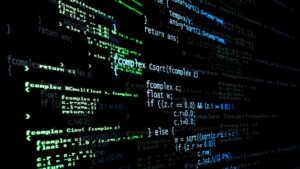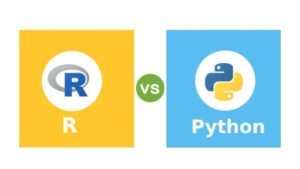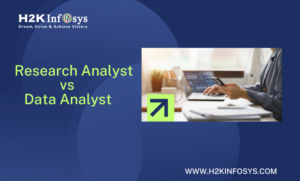Data science is a field that is growing sporadically and is bound to continue growing in the coming years. As more and more people recognise the potentials Data Science holds, the adoption for the field has since skyrocketed. The information about Data Science on the net knows no bounds and while some of these contents are valuable, some others are blatant misconceptions.
As a fresher, you may be discouraged to get into Data Science when you read these misconceptions. In this article, we will point out some of these myths about Data Science and debunk them with facts.
By the end of the article, you will quickly realise that Data Science is not as mystified as people have painted it to be. And even as a fresher, you can take a leap to learn Data Science and become good at it.
Let’s get on with it.
Myth #1: AI will replace Data Scientists
It has been said that AI will take over many jobs in the near future but this is just a myth. In data science, AI may help the Data Scientist become more efficient at what they do but cannot completely annihilate the field. For instance, AI can help with boring and repetitive tasks such as data gathering and perhaps preparation. In fact the AI system can build machine learning models.
AutoML tools such as Amazon SageMaker, Microsoft Azure AutoML, Google AutoML, IBM Watson Studio are examples of tools that can build machine learning models from scratch to finish. While these tools are great, they cannot perform operations that involve critical thinking. As an example, the AI system cannot make profitable business tradeoffs. The data scientist would still be required to apply analytical skills and critical thinking to make business profitable decisions.
It is worthy to note however that as a Data Scientist, it is important to learn how to use these AI tools. The world is moving fast, and to not be left behind, you must maximize how to use these AI tools to augment your work and become more efficient. In reality, Data Scientists would continually work with AI to create more AI systems.
Myth #2: The Data Scientist only build Predictive Models
This is an extension to the previous myth. If you ask a non-technical person what the role of a Data Scientist is about, they will most likely say building predictive models. Of course, a data scientist should build models that predict a customer’s purchasing power, or the kind of product they would most likely buy. But there is more to Data Science than meets the eye.
A Data Scientist works on various steps in the data science lifecycle to ensure underlying trends are discovered in unclean data and predictive models can be created in real-time. The data science lifecycle includes:
- Understanding the business problems
- Creating various hypothesis to be tested, discarded, or upheld
- Data collection
- Data wrangling and cleaning
- Exploratory data analysis
- Model creation
- Evaluating the model created
- Deployment of the model in production
- Managing the deployed model and updating the training data per time.
To get a hang of these processes, you will need to practise with Data Scientists ahead of you. You can enroll in data science training with instructors of good calibre. In the end, you will become more confident about your Data Science skills and are poised to land your dream job in the data science domain.
Myth #3: You must have a Background in Mathematics and Computer Background
Let’s be clear. You will require a decent knowledge of mathematics and computers to excel in the data science domain. In fact, the Data Science Venn Diagram shows that Data Science is the intersection of Programing Skills, Statistics, and some Domain knowledge.
Source: Wikipedia
But do you necessarily need a degree in these fields to pivot into Data Science? Absolutely not. Because Data Science is domain specific, you can work as a Data Science while actively utilizing the knowledge in your domain. If you are scared of mathematics and feel programming is difficult, join reputable data science classes where you will be taught the required maths and coding you need to thrive.
There are folks that have transitioned into data science and are occupying senior positions without having to do maths or programming in the University. You can as well, if you are committed and would put in the required work.
Myth #4: One you build an AI system, it evolves and generalizes itself.
People may be tempted to think that once an AI model is built, the performance remains high and even when there is a change in the landscape, the AI model adapts to the change. This sounds like a great idea but it is totally false. An AI system trained on a specific data to predict customer behavior may not perform well if the customer data changed appreciably over time. Also, an Ai trained to recommend music to its user cannot predict whether a user has cancer or not.
AI can be classified into two: Artificial General Intelligence (AGI) and Narrow AI. While there has been massive research about AGI, we are nowhere actualizing it. In Narrow AI, the system is trained to perform only one task using some data. A change in the data would require the AI model to be retrained and evaluated. The model cannot also perform tasks outside the purview of what it was trained to do. You can enroll in data science training with Python to understand how these work better.
Myth #5: You need heavy Computational Hardware to run real deep learning tasks.
Deep learning is a branch of machine learning that mimics how the human brain learns by stacking neural networks in layers and finding the best weights and biases across every node that returns the lowest loss function.
It is best for creating object detection models, language translation models, image captioning, time series forecasting, you name it. But training deep learning models usually requires high computation power, especially a GPU.
The good news however is that you do not need to buy expensive hardware to train deep learning models. Cloud computing has made things easier. You can train complex models with Google Colab with a machine without a GPU. Yes, Colab allows you to leverage the power of GPUs for free.
There is really no excuse to get into deep learning if you want to.
Wrapping up
In this article, you have seen 5 myths about data science and the real truth. Now you know there is nothing stopping you from transitioning into data science if you have the sheer willpower to. With consistency, you can definitely enjoy the endless possibilities that this expansive field holds.
